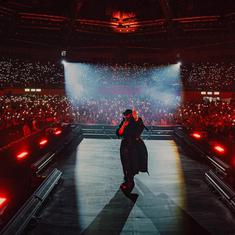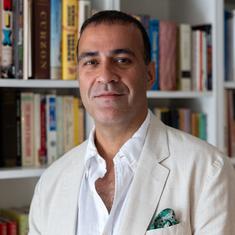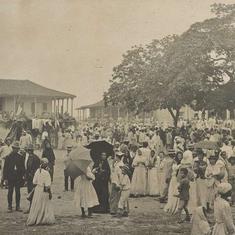It was 1977, it was still Calcutta when one evening my father came from a trip to Delhi with a book in his briefcase. A book which had a man wearing a strange hat (which I later came to know to be a kepi) with the crosshairs drawn around his head. The Day of the Jackal kept me up till 1 in the morning, the final three chapters read in the bathroom so that the lights would not disturb my sisters, and I spent the next few days in a daze, still marvelling at the details.
That copy of The Day of the Jackal circulated through at least five households in the multistoreyed complex in which I stayed, and my father soon gave in to my entreaties and picked up The Odessa File as well. And so Frederick Forsyth became the completely convincing conduit to a thrilling world of spies and assassins, of Pentagon conferences and SR 71 spy planes, each detail authentic, each action believable.
The Forsyth saga
It’s not easy to understand his appeal in a world where the internet can now tell you exactly what happened with the OAS in France in exhaustive detail, or what the insides of a Blackbird spy plane look like, but in those days Frederick Forsyth was the man who took us to those meetings, flew us in those planes and showed us exactly how that fabled sniper’s rifle would be assembled.
And if anyone knew those details, it would have to be him. A former RAF fighter pilot who later joined Reuters and then the BBC, Forsyth reported extensively on French affairs and assassination attempts on De Gaulle before moving to Africa, where he covered the war in Biafra. And after the BBC seemingly lost interest in Biafra, Forsyth returned as an independent reporter to continue covering the conflict, and even wrote a non-fiction work, The Biafra Story, which was reasonably well received, even if it did not really change his financial fortunes.
Finally, in 1971, the self-admittedly broke former journalist went around publishing houses peddling a manuscript that involved an assassination attempt on Charles De Gaulle, who still happened to be alive at the time. Given that this was one book where everybody knew things would finally turn out, four of them rejected him immediately, before a fifth, Hutchinson, decided that the appeal was in the details, and went ahead and published. The Day of the Jackal was a huge success, sold millions of copies, inspired two film versions and then an OTT version that released in November 2024.
The Day of the Jackal was followed by The Odessa File, with intrepid journalist Peter Miller, clearly based on Forsyth himself, chasing a shadowy Nazi organisation in his black E type Jaguar, and trying to corner Eduard Roschmann, a former camp commandant known as the Butcher of Riga. Given that this was less than 30 years after the Second World War, many of the ex-Nazis were active, especially in South America. And Simon Weisenthal, the legendary real life Nazi hunter and a prominent character in the book became a hero for so many of us.
The accidental textbook
The story behind his third novel was perhaps the strangest. The Dogs of War, released in 1974, was about a coup attempt by mercenaries in the fictional African country of Zangaro, acting on behalf of a western industrialist, the idea being to install a puppet dictator who would farm them the lucrative mining rights. Zangaro was modelled on Equatorial Guinea, and Forsyth actually commissioned research into how such a coup could be mounted, and was told it could be done and would cost around $240,000 at the time.
Absolutely believable, and accurate to the minutest details, The Dogs of War was regarded as a textbook for mercenaries in Africa. Bizarrely enough, a coup modelled exactly on the lines described in the book was mounted in 2004, involving former PM Margaret Thatcher’s son Mark Thatcher and the mercenary Simon Mann.
Forsyth’s next full-length novel, The Devil’s Alternative, published in 1979 remained eerily prescient, given that the plot involved Ukrainian nationalists, a rogue Russian general, and a grain shortage, all of which came to pass over the next few decades.
Forsyth continued to turn out extremely readable thrillers, but after the advent of the likes of Tom Clancy, and then, later, the internet, his meticulous detailing no longer made his books stand apart as they used to in the ’70s and ’80s. Still, his two collections of short stories were piquant and extremely readable.
Growing up, growing old
As the new millennium approached, Forsyth’s core audience, especially in India, grew up and went to work, or graduated to more sophisticated plots and authors. At their ’70s’ best, his stories had hair on their chests, with a beer in one hand and a cigarette in the other, with few or no female characters and very little character-building. The appeal was in the practical details and the breakneck pace – and in those early days, it was enough to sweep us of our feet. Many of us later made pilgrimages to the locales that the likes of Forsyth, Alistair MacLean and Jack Higgins described in their works, places we’d never thought we would see for ourselves reading their works in India, decades ago.
Despite blockbusters like The Day of the Jackal, and The Odessa File, my favourite Forsyth work is a short story that he wrote in 1975, drawing from his days as an RAF pilot flying Vampire fighters. The Shepherd has stayed with me, and is mandatory reading every Christmas. Funny, because for all his avowed realism, The Shepherd demanded a huge leap of faith.
Unlike most of the memorable characters he created, Forsyth passed away at home at the age of 86 after a brief illness. Trust him as always not to play by the book.











